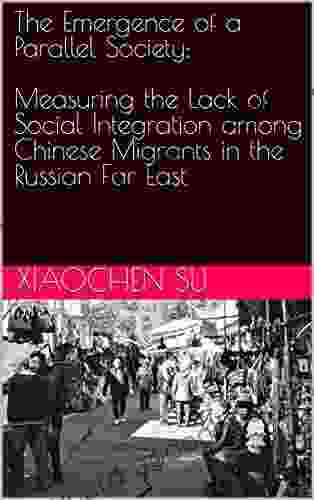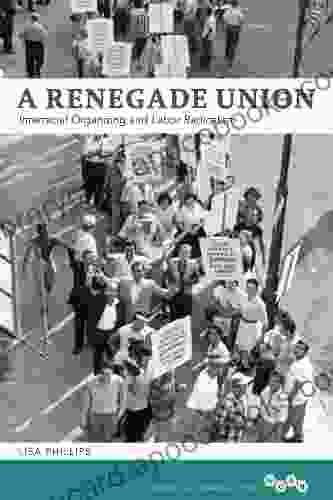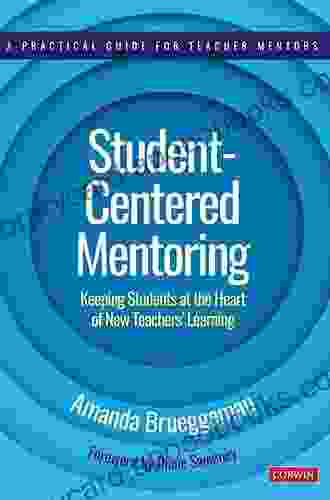Interracial Organizing and Labor Radicalism: A History of the Working Class in America


This book is a groundbreaking history of interracial organizing and labor radicalism in the United States. It traces the history of the working class from the early days of slavery to the present day, focusing on the ways in which workers of different races have come together to fight for their rights. The book is essential reading for anyone who wants to understand the history of the American working class and the struggle for racial justice.
4.6 out of 5
| Language | : | English |
| File size | : | 2062 KB |
| Text-to-Speech | : | Enabled |
| Screen Reader | : | Supported |
| Enhanced typesetting | : | Enabled |
| Word Wise | : | Enabled |
| Print length | : | 231 pages |
From Slavery to the New Deal
The history of interracial organizing and labor radicalism in the United States begins with the institution of slavery. Slaves were the first workers in the United States, and they fought back against their oppression in a variety of ways. One of the most important forms of resistance was the slave rebellion. Slave rebellions were often led by skilled workers, who used their knowledge and experience to organize and lead their fellow slaves in revolts. The most famous slave rebellion was the Nat Turner Rebellion of 1831. Turner, a skilled blacksmith, led a group of slaves in a revolt that killed 55 white people before it was put down.
After the Civil War, freed slaves continued to fight for their rights. They organized labor unions, fought for voting rights, and sought to create a more just and equitable society. Interracial organizing was essential to the success of these efforts. White workers and black workers came together to fight for common goals, such as higher wages and better working conditions. This interracial cooperation was often difficult to achieve, but it was essential to the success of the labor movement.
The New Deal era of the 1930s was a time of great progress for interracial organizing and labor radicalism. The New Deal created new opportunities for workers of all races, and it also led to the passage of important labor laws, such as the National Labor Relations Act. These laws made it easier for workers to organize unions and bargain collectively with their employers.
The Civil Rights Era and Beyond
The Civil Rights Era of the 1950s and 1960s was a time of great change for the United States. The Civil Rights Movement led to the passage of important laws, such as the Civil Rights Act of 1964 and the Voting Rights Act of 1965. These laws outlawed discrimination on the basis of race and gave African Americans the right to vote.
The Civil Rights Movement also had a major impact on the labor movement. Interracial organizing was essential to the success of the Civil Rights Movement, and it also led to the formation of new labor unions that were open to workers of all races. These unions played a key role in the fight for civil rights and economic justice.
In the years since the Civil Rights Era, interracial organizing and labor radicalism have continued to play an important role in the struggle for racial justice and economic equality. Workers of all races have come together to fight for common goals, such as higher wages, better working conditions, and affordable healthcare. Interracial organizing is essential to the success of the labor movement, and it is also essential to the fight for a more just and equitable society.
The history of interracial organizing and labor radicalism in the United States is a long and complex one. It is a story of struggle and sacrifice, but it is also a story of hope and progress. Workers of all races have come together to fight for their rights, and they have made great strides in the fight for racial justice and economic equality. The struggle is not over, but the history of interracial organizing and labor radicalism provides us with hope for the future.
4.6 out of 5
| Language | : | English |
| File size | : | 2062 KB |
| Text-to-Speech | : | Enabled |
| Screen Reader | : | Supported |
| Enhanced typesetting | : | Enabled |
| Word Wise | : | Enabled |
| Print length | : | 231 pages |
Do you want to contribute by writing guest posts on this blog?
Please contact us and send us a resume of previous articles that you have written.
 Book
Book Novel
Novel Page
Page Chapter
Chapter Text
Text Story
Story Genre
Genre Reader
Reader Library
Library Paperback
Paperback E-book
E-book Magazine
Magazine Newspaper
Newspaper Paragraph
Paragraph Sentence
Sentence Bookmark
Bookmark Shelf
Shelf Glossary
Glossary Bibliography
Bibliography Foreword
Foreword Preface
Preface Synopsis
Synopsis Annotation
Annotation Footnote
Footnote Manuscript
Manuscript Scroll
Scroll Codex
Codex Tome
Tome Bestseller
Bestseller Classics
Classics Library card
Library card Narrative
Narrative Biography
Biography Autobiography
Autobiography Memoir
Memoir Reference
Reference Encyclopedia
Encyclopedia Ja Armstrong
Ja Armstrong Andi Marie Cantele
Andi Marie Cantele Karla Brandenburg
Karla Brandenburg David L Eng
David L Eng David Allen Bergin
David Allen Bergin Lynne Kaufman
Lynne Kaufman Tom Means
Tom Means Ana Elena Pena
Ana Elena Pena Amandeep Ahuja
Amandeep Ahuja Clarissa Price
Clarissa Price Carlo Rotella
Carlo Rotella Amy Carlile
Amy Carlile Amy Klobuchar
Amy Klobuchar Lana Otoya
Lana Otoya Brendan Ruud
Brendan Ruud Thomas Lynch
Thomas Lynch Amy West
Amy West Robert D Behn
Robert D Behn Derrick Belanger
Derrick Belanger Amy Wright
Amy Wright
Light bulbAdvertise smarter! Our strategic ad space ensures maximum exposure. Reserve your spot today!

 Wayne CarterThe Emergence of Parallel Societies: Unveiling the Hidden Communities That...
Wayne CarterThe Emergence of Parallel Societies: Unveiling the Hidden Communities That... Terry PratchettFollow ·18.8k
Terry PratchettFollow ·18.8k Philip BellFollow ·7.7k
Philip BellFollow ·7.7k Robert Louis StevensonFollow ·9k
Robert Louis StevensonFollow ·9k Fred FosterFollow ·16.3k
Fred FosterFollow ·16.3k William GoldingFollow ·17.7k
William GoldingFollow ·17.7k Ralph Waldo EmersonFollow ·2.5k
Ralph Waldo EmersonFollow ·2.5k Henry Wadsworth LongfellowFollow ·14.8k
Henry Wadsworth LongfellowFollow ·14.8k Kenzaburō ŌeFollow ·19.4k
Kenzaburō ŌeFollow ·19.4k

 Roald Dahl
Roald DahlImmerse Yourself in a Mesmerizing Tapestry of Creativity:...
Prepare to be captivated by "Spectra," an...

 Clarence Brooks
Clarence BrooksUnleash Your Inner Taylor with Red Piano Vocal Guitar:...
Embrace the Red Era...

 Jeffrey Hayes
Jeffrey HayesUnlock Your Child's Academic Potential: A Comprehensive...
In today's rapidly changing...

 William Golding
William GoldingBrave Elizabeth: A Captivating Tale of Resilience and...
Immerse Yourself in a Riveting Historical...

 Curtis Stewart
Curtis StewartUnveiling the Heartfelt Melodies of Taylor Swift: A...
Step into the enchanting world of Taylor...
4.6 out of 5
| Language | : | English |
| File size | : | 2062 KB |
| Text-to-Speech | : | Enabled |
| Screen Reader | : | Supported |
| Enhanced typesetting | : | Enabled |
| Word Wise | : | Enabled |
| Print length | : | 231 pages |












